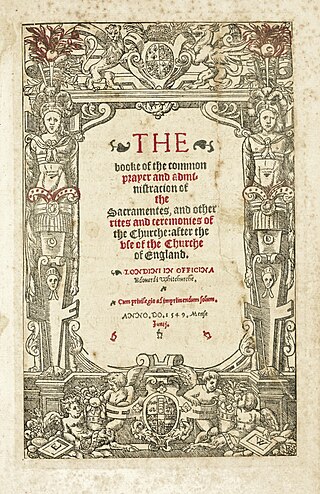
Year 1549 (MDXLIX) was a common year starting on Tuesday of the Julian calendar. In the Kingdom of England, it was known as "The Year of the Many-Headed Monster", because of the unusually high number of rebellions which occurred in the country.

Kett's Rebellion was a revolt in the English county of Norfolk during the reign of Edward VI, largely in response to the enclosure of land. It began at Wymondham on 8 July 1549 with a group of rebels destroying fences that had been put up by wealthy landowners. One of their targets was yeoman Robert Kett who, instead of resisting the rebels, agreed to their demands and offered to lead them. Kett and his forces, joined by recruits from Norwich and the surrounding countryside and numbering some 16,000, set up camp on Mousehold Heath to the north-east of the city on 12 July.

Edward Seymour, 1st Duke of Somerset, 1st Earl of Hertford, 1st Viscount Beauchamp, also known as Edward Semel, was an English nobleman and politician who served as Lord Protector of England from 1547 to 1549 during the minority of his nephew King Edward VI. He was the eldest surviving brother of Queen Jane Seymour, the third wife of King Henry VIII.
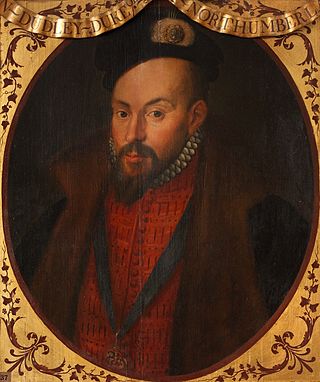
John Dudley, 1st Duke of Northumberland was an English general, admiral, and politician, who led the government of the young King Edward VI from 1550 until 1553, and unsuccessfully tried to install Lady Jane Grey on the English throne after the King's death. The son of Edmund Dudley, a minister of Henry VII executed by Henry VIII, John Dudley became the ward of Sir Edward Guildford at the age of seven. Dudley grew up in Guildford's household together with his future wife, Guildford's daughter Jane, with whom he was to have 13 children. Dudley served as Vice-Admiral and Lord High Admiral from 1537 until 1547, during which time he set novel standards of navy organisation and was an innovative commander at sea. He also developed a strong interest in overseas exploration. Dudley took part in the 1544 campaigns in Scotland and France and was one of Henry VIII's intimates in the last years of the reign. He was also a leader of the religious reform party at court.

Robert Kett was the leader of Kett's Rebellion.

The Prayer Book Rebellion or Western Rising was a popular revolt in Cornwall and Devon in 1549. In that year, the first Book of Common Prayer, presenting the theology of the English Reformation, was introduced. The change was widely unpopular, particularly in areas where firm Catholic religious loyalty still existed, such as Lancashire. Along with poor economic conditions, the enforcement of English language church services only in Cornish-speaking areas led to an explosion of anger in Cornwall and Devon, initiating an uprising. At the gates of Exeter, the rising leaders announced, "and so we Cornishmen, whereof certain of us understand no English, utterly refuse this new English". In response, Edward Seymour, 1st Duke of Somerset sent John Russell to suppress the revolt, with the rebels being defeated and its leaders executed two months after the beginning of hostilities.

Chipping Norton is a market town and civil parish in the Cotswold Hills in the West Oxfordshire district of Oxfordshire, England, about 12 miles (19 km) south-west of Banbury and 18 miles (29 km) north-west of Oxford. The 2011 Census recorded the civil parish population as 5,719. It was estimated at 6,254 in 2019.
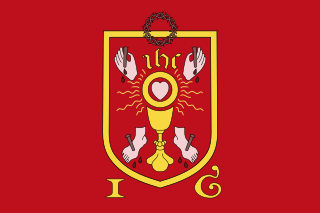
The Pilgrimage of Grace was a popular revolt beginning in Yorkshire in October 1536, before spreading to other parts of Northern England including Cumberland, Northumberland, Durham and north Lancashire, under the leadership of Robert Aske. The "most serious of all Tudor period rebellions", it was a protest against Henry VIII's break with the Catholic Church, the dissolution of the lesser monasteries, and the policies of the King's chief minister, Thomas Cromwell, as well as other specific political, social, and economic grievances.
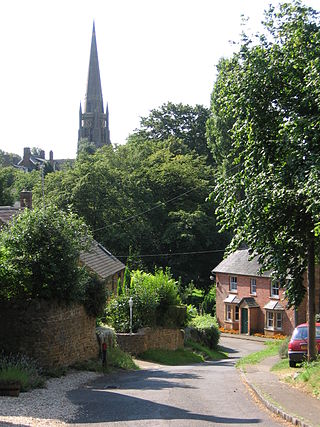
Bloxham is a village and civil parish in northern Oxfordshire several miles from the Cotswolds, about 3 miles (5 km) southwest of Banbury. It is on the edge of a valley and overlooked by Hobb Hill. The village is on the A361 road. The 2011 Census recorded the parish's population as 3,374.

Humphrey Arundell of Helland in Cornwall, was the leader of Cornish forces in the Prayer Book Rebellion early in the reign of King Edward VI. He was executed at Tyburn, London after the rebellion had been defeated.

Barford St Michael is a village and former civil parish, now in the parish of Barford St. John and St. Michael, in the Cherwell district, in the county of Oxfordshire, England. It is on the south bank of the River Swere, about 5 miles (8 km) south of Banbury.
Henry Bertie, JP, of Chesterton, Oxfordshire was an English soldier and Tory politician who sat in the English and British House of Commons between 1678 and 1715.

William Grey, 13th Baron Grey de Wilton, was an English baron and military commander serving in France in the 1540s and 1550s, and in the Scottish Wars of the 1540s.

The Battle of Sampford Courtenay was one of the chief military engagements in the Western Rebellion of 1549.
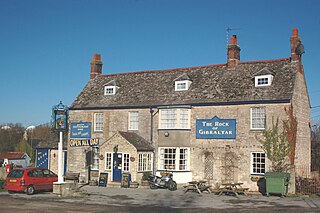
Enslow is a hamlet on the banks of both the River Cherwell and the Oxford Canal in Bletchingdon civil parish, Oxfordshire. The medieval main road linking London with Chipping Norton and Worcester crosses the Cherwell at Enslow. There was a bridge here by the time that John Leland toured England in 1538–43. John Ogilby's Britannia Atlas of 1675 records a timber bridge here that he called "Emley Bridg". In 1718 the road was made into a turnpike and at some stage the timber bridge was replaced by one with pointed stone arches. In 1814 the stone bridge was widened on its downstream side. to almost double its former width. In contrast with the older upstream side of the bridge, the 1814 arches are semicircular. The road is now the A4095.

Great Haseley is a village and civil parish in South Oxfordshire, England. The village is about 4.5 miles (7 km) southwest of Thame. The parish includes the hamlets of Latchford, Little Haseley and North Weston and the house, chapel and park of Rycote. The parish stretches 6 miles (10 km) along a northeast — southwest axis, bounded by the River Thame in the north, Haseley Brook in the south and partly by a boundary hedge with Little Milton parish in the west. The 2011 Census recorded a parish population of 511.
The Oxfordshire rising took place in November 1596 under the rule of Queen Elizabeth I of England during times of bad harvest and unprecedented poverty. A small group of impoverished men developed a plan to seize weapons and armour and march on London, hoping to attract "200 or 300... from various towns of that shire". They met on Enslow Hill on 21 November, but without any of the assumed support were quickly arrested, and tortured due to suspicions of a wider conspiracy. A year later two of the men were hanged, drawn, and quartered for their treason.
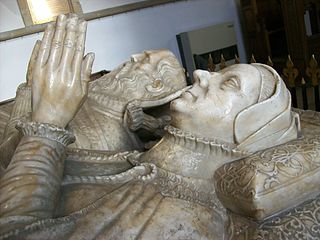
John Williams, 1st Baron Williams of Thame was Master of the Jewels and Lord President of the Council of the Welsh Marches. He was summoned to parliament as Lord Williams of Thame on 17 February 1554.
This is a list of Sheriffs of Berkshire and Oxfordshire. One sheriff was appointed for both counties from 1248 until the end of 1566, after which separate sheriffs were appointed. See High Sheriff of Berkshire and High Sheriff of Oxfordshire for dates before 1248 or after 1566.
















